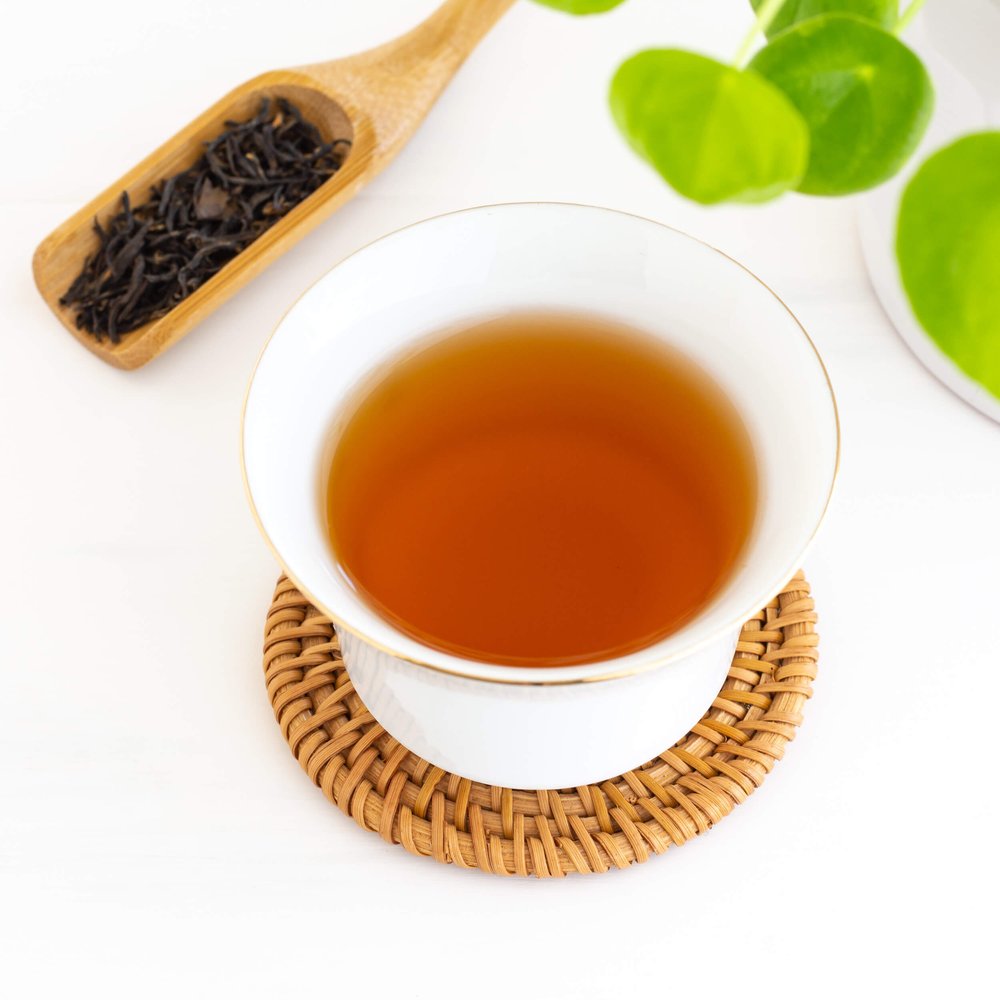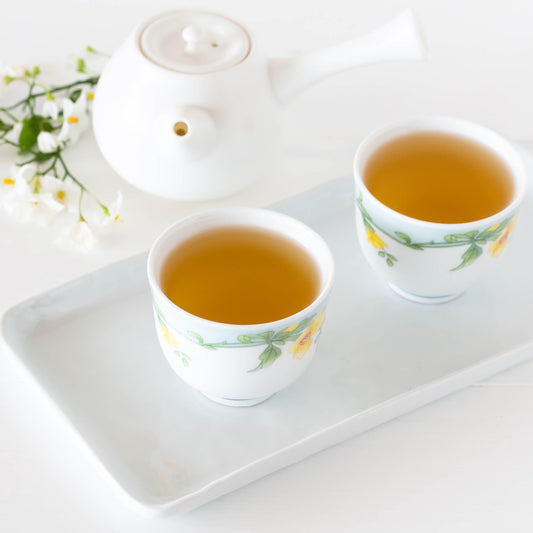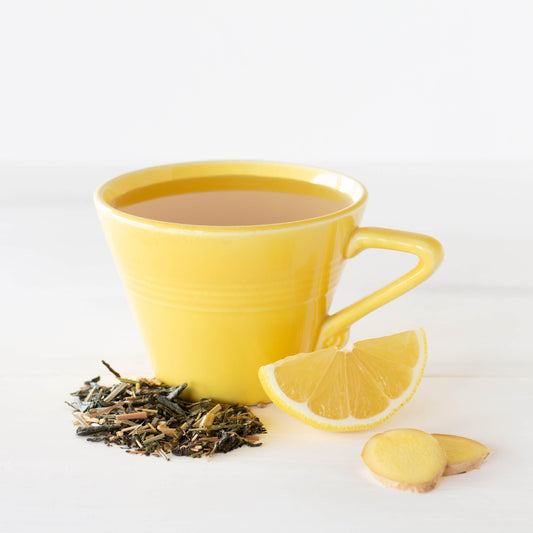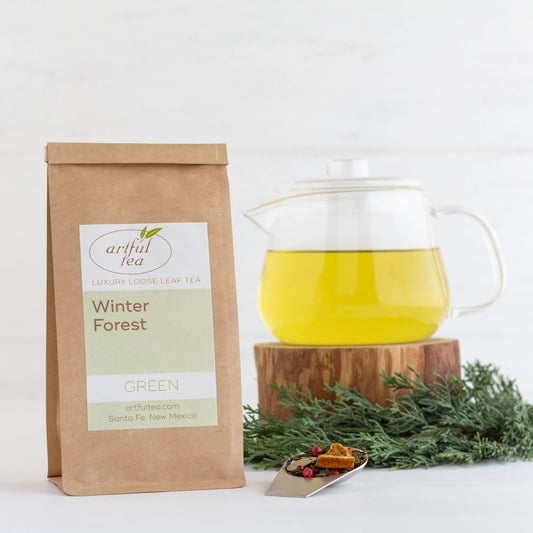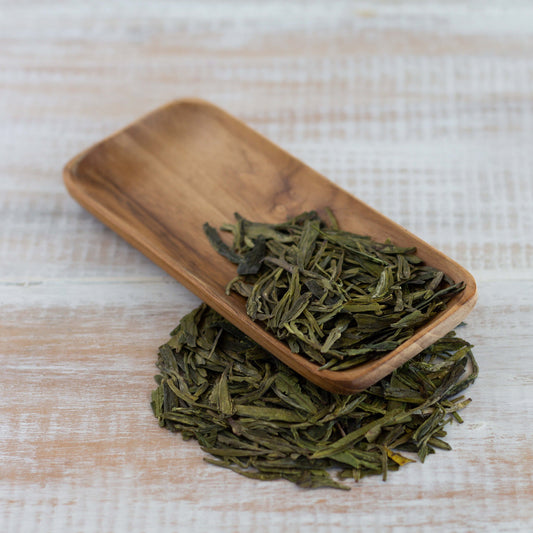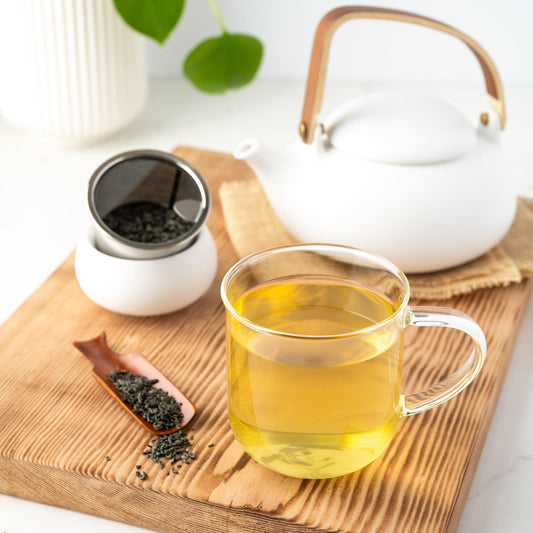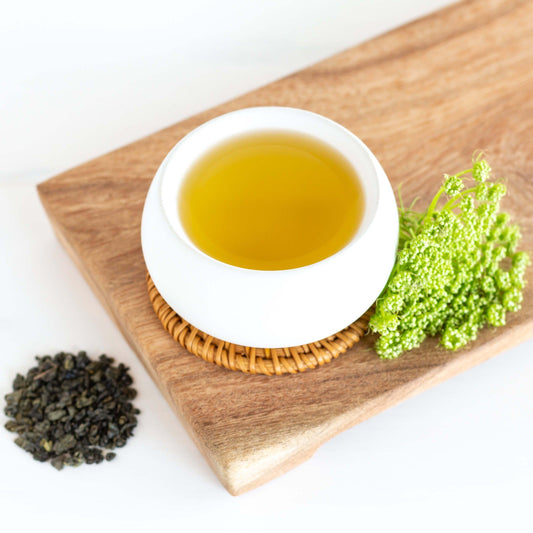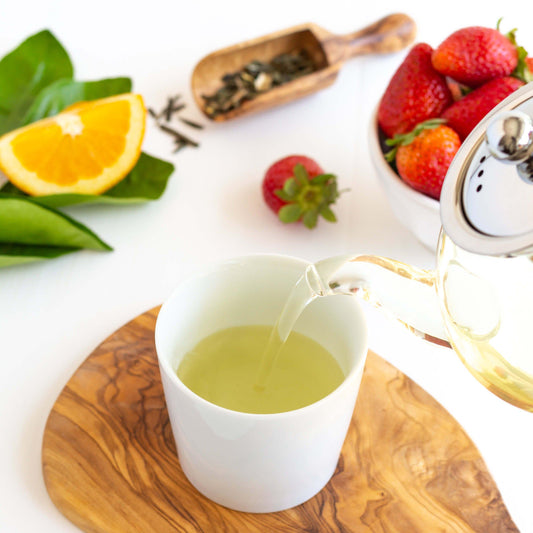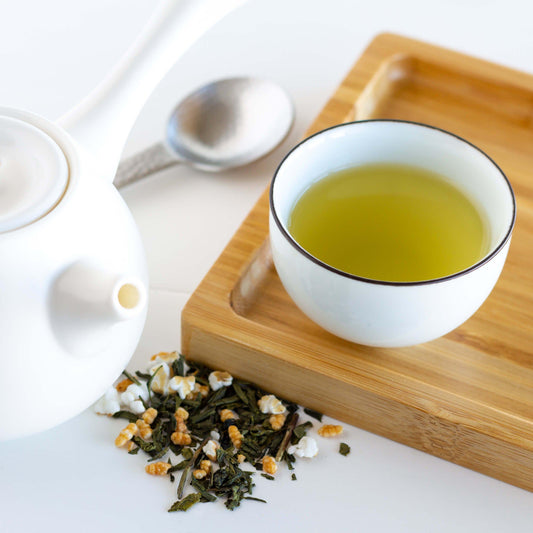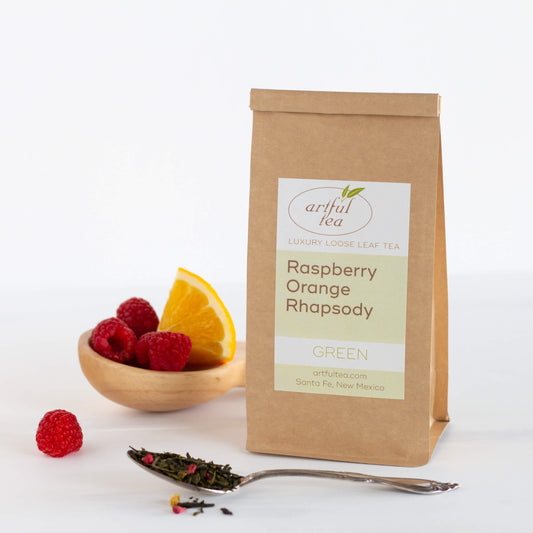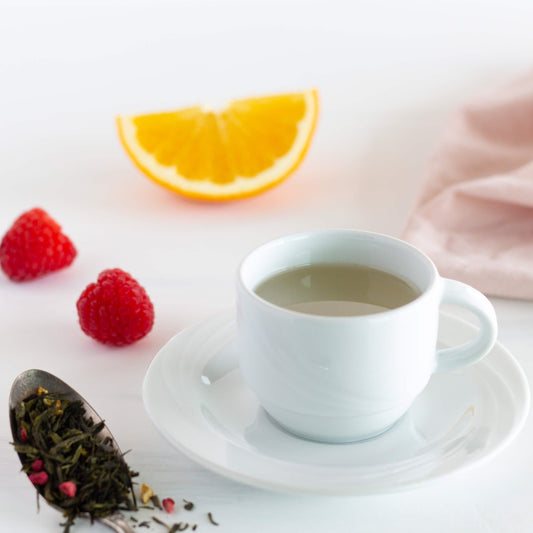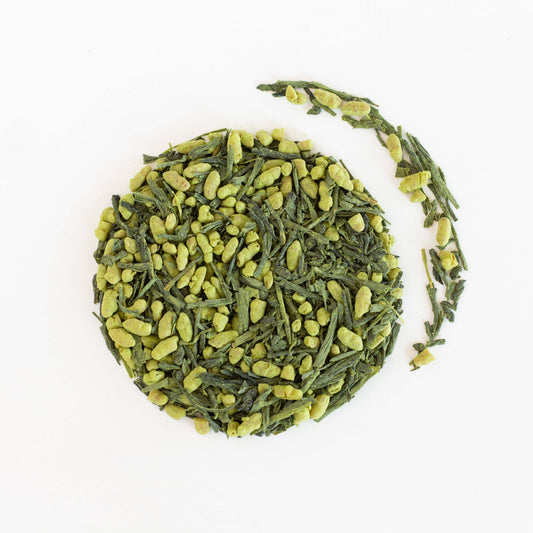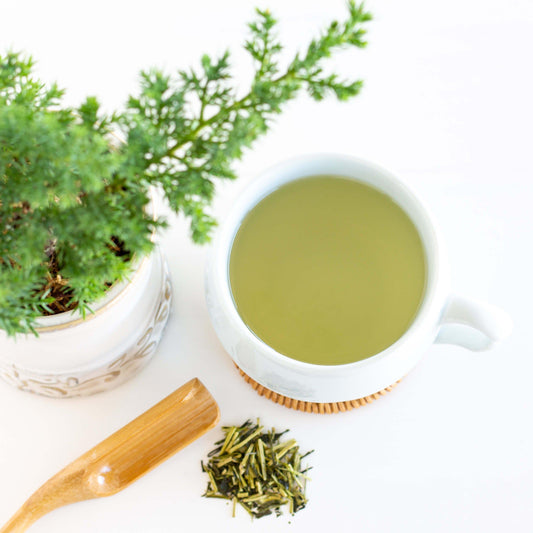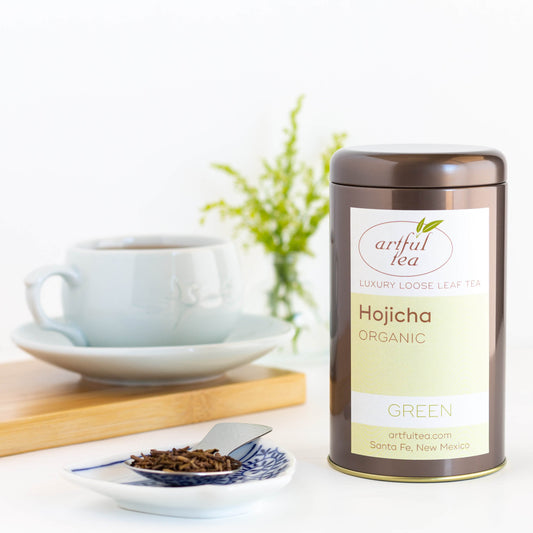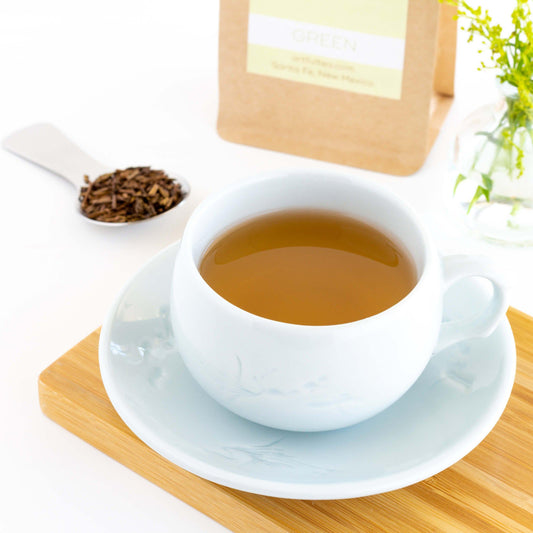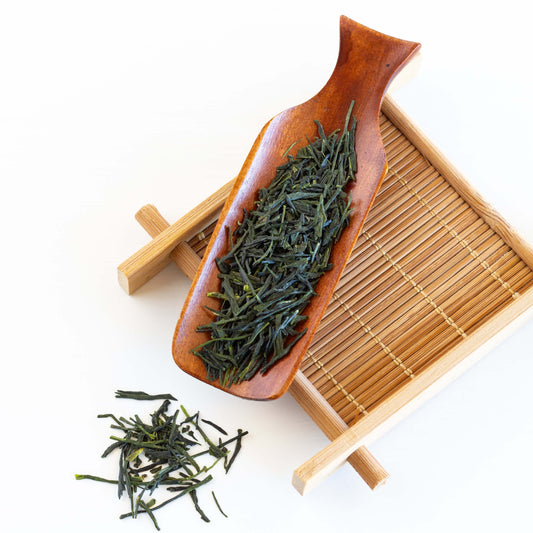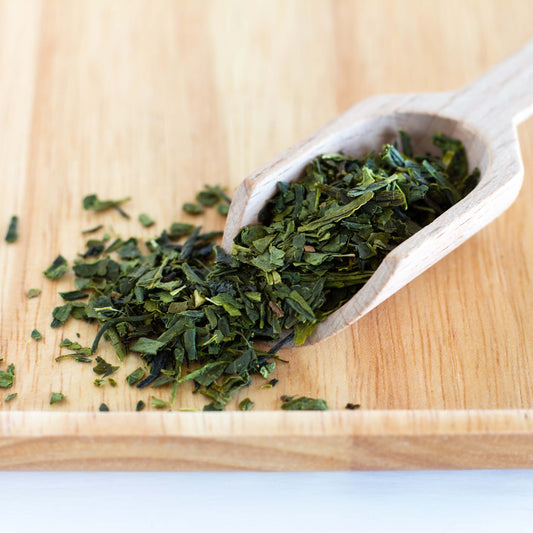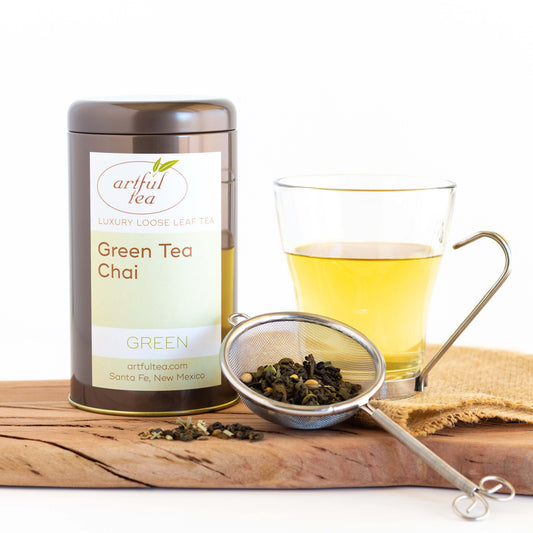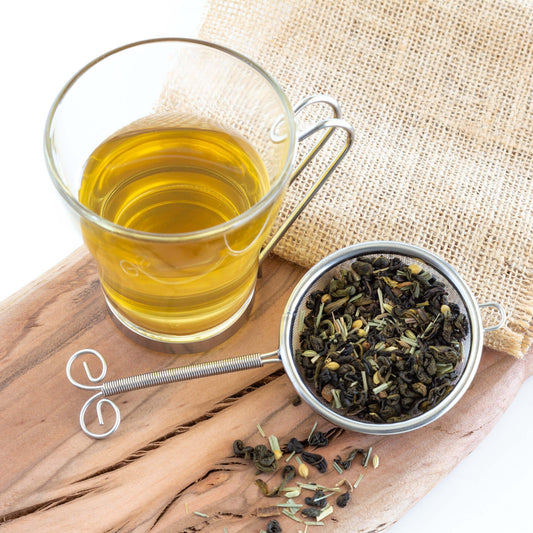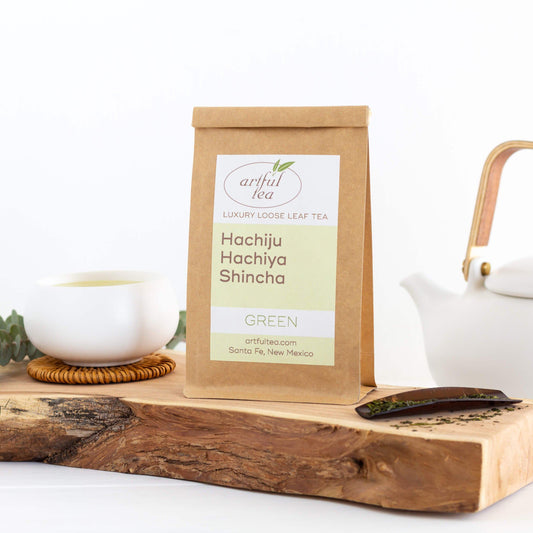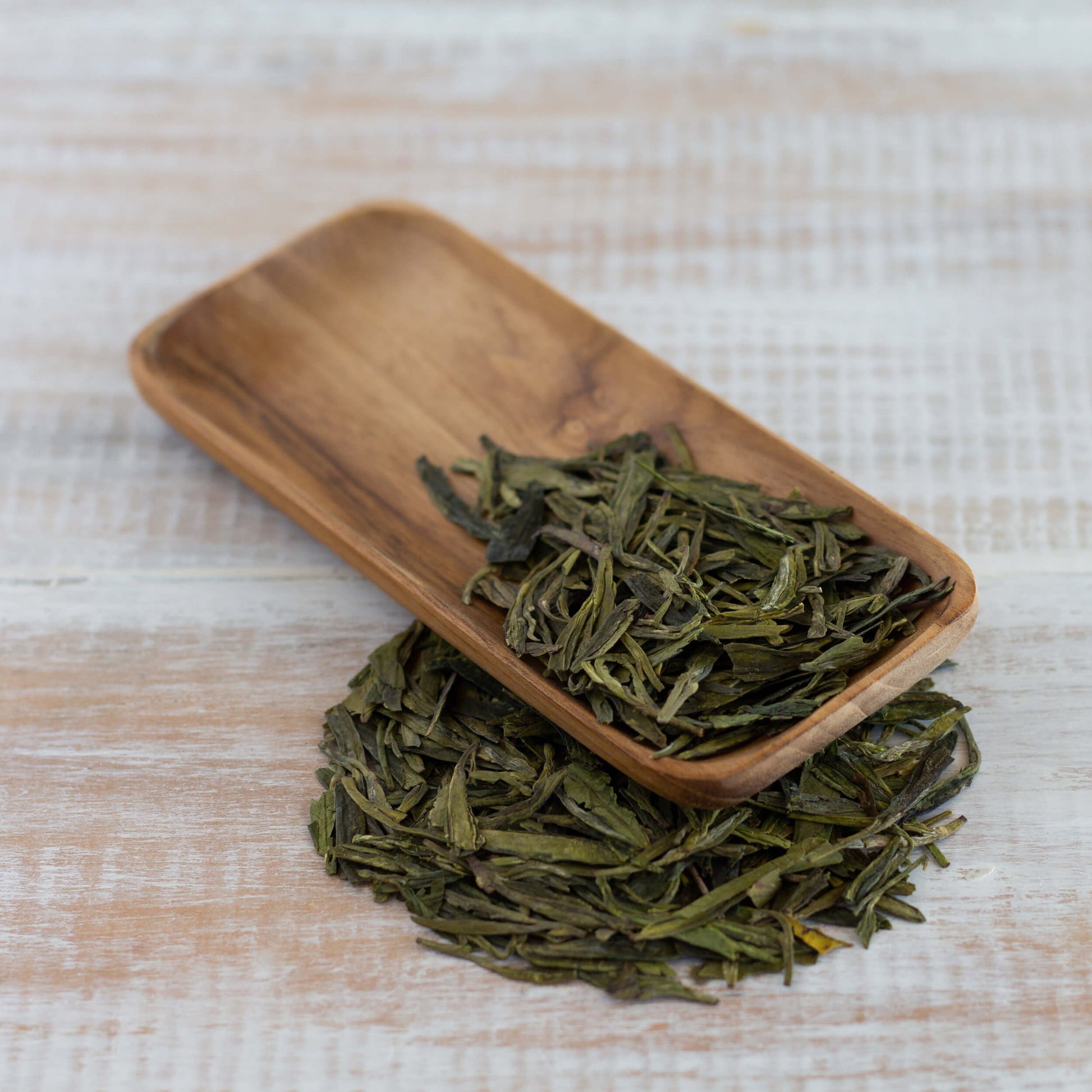With this in mind, it’s no wonder that some people are intimidated by green tea, or aren’t sure how to brew up a cup that’s to their taste. Luckily, there are a few simple steps you can take in order to brew up a tasty cup or pot of green tea that isn’t bitter or over-strong.
How to make your green tea taste better
Why does green tea leave something to be desired for some tea drinkers? In many cases, it's because it's being prepared in a way that emphasizes the bitter qualities of green tea, and drowns out the sweetness and umami notes. By
1. Use cooler water
Water temperature is one of the most important factors when it comes to determining how your tea will taste. For black and herbal teas, we recommend using hot, boiling water. In many cases, this is the way that people are most familiar with when it comes to making tea, whether they heat a kettle on the stove or wait for an electric kettle to reach a boil.
With green tea, however, boiling water is much too hot. Using boiling water to prepare green tea will burn the leaves, resulting in a bitter taste. Instead, we recommend using water that’s around 175-180 degrees. This water will be warm enough to properly infuse the leaves, but isn’t hot enough to burn or scald them.
The water should be steaming and hot, but shouldn’t have started to boil. It’s okay if there are a few small streams of bubbles beginning to form at the bottom of the kettle. If your water reaches a roiling boil before you notice it, you can simply set it aside and let it cool for two to three minutes before infusing your tea leaves.
2. Steep for less time
Another common mistake when preparing green tea is to steep the tea for the same amount of time that you would for a black or an herbal tea. While some types of tea can be infused for five or six minutes, green teas become too strong if they’re steeped for that long.
Depending on the tea, your steep time may only be one to two minutes. All of our green teas are labeled with brewing instructions, so you know just how long to steep your tea. If you have trouble keeping track, you may also want to invest in a tea timer. If you like your tea a little stronger or a little weaker, feel free to experiment with different steep times to see what works best for you.
3. Use fewer tea leaves
If your green tea is still unpleasantly strong or bitter, you may want to consider using less tea when you brew up a cup or a pot. Using more tea leaves can result in a stronger, more full-bodied cup of tea. Some green teas, like Gunpowder, are rolled into small, concentrated balls, which means you may find yourself needing to use less tea per cup.
Other green teas, like Dragon Well, have longer leaves and are less dense. While we recommend using a teaspoon of tea leaves for every six ounces of water, this isn’t a hard and fast rule - we suggest playing around with these ratios until you brew a cup of tea you’re happy with.
4. Try preparing green tea using the gongfucha method
Whether you’re just beginning to learn more about green tea or are a dedicated green tea drinker, you may be interested in learning more about traditional preparation methods for green tea. Gongfucha is a tea ceremony practiced in China and in other Asian countries, and is designed to maximize the flavor and aesthetic experience of drinking a cup of tea over multiple infusions. “Gong Fu Cha” is translated as “making tea with great skill” - a practice that allows you to focus on the simple process of preparing tea and elevate it to an art.
To brew tea using the gongfucha method, you’ll need a small-sized teapot. These pots may be made out of yixing clay, which develops a patina over time, or they may be made out of porcelain or ceramic. They often come with two or more small cups to pour your tea into. Depending on the size of your pot and the size of your tea leaves, you should use somewhere between half a teaspoon and two teaspoons of tea leaves. Heat your water and infuse your tea leaves for only a few seconds, then pour your tea into the small cups. Repeat this process, infusing the tea leaves for 10-15 seconds at a time before pouring the tea.
By preparing tea using this method, you can four or five (or more!) infusions from your tea. Gong Fu Cha is a meditative process that allows you to savor the subtle differences in each successive infusion of tea. Because the tea becomes milder through additional infusions, it’s also a good option for those who might find green tea too strong when brewed using the traditional western method.
5. Experiment with different types of green tea
When it comes to green tea, there’s a huge variety to choose from. For classic green teas, the two main categories consist of Japanese green tea and Chinese green tea. Japanese green teas are steamed, and tend to have a fuller body, a deeper green color, and a rich, vegetal, almost oceanic taste. Chinese green teas are pan-fired, and tend to be lighter and mellower, with subtle fruit and floral notes.
Green teas also come in a variety of different flavored blends. These blends add ingredients like fruits, flowers, herbs, and spices to a green tea base. Popular flavored green teas include Moroccan Mint, flavored with spearmint, Vanilla Bean, flavored with vanilla, and Winter Forest, flavored with almond, orange, and pink peppercorn. If you’re not sure yet what green teas you like, feel free to experiment! A green tea sampler pack can help you try several different green teas in order to help you determine which teas you like best.
6. Try cold brewing your green tea
Cold brewing is a great way to prepare iced tea. Just add tea leaves and water to your pot or pitcher, then infuse in your refrigerator overnight. Cold-brewed tea tends to be lighter and smoother than tea brewed using hot water. If you find green tea to be unpleasantly bitter or astringent, you may be pleasantly surprised by how tasty cold-brewed green tea is!
7. Try ice brewing your tea
The Japanese method of ice brewing teas is called koridashi. Try out this method of brewing tea by steeping tea leaves with melting ice cubes. This slow, meditative brewing process results in a tea with a mild, mellow flavor that emphasizes the umami notes present in tea and minimizes any bitterness or astringency.
8. Add sweetener
If you're trying to drink more tea but you also have a sweet tooth, there's no harm in adding sugar, honey, or another type of sweetener to your green tea. We're of the firm belief that there's no wrong way to brew tea—as long as you enjoy drinking the finished product!
Green tea health benefits
Many people are first drawn to green tea because of its many health benefits. Green tea is extremely high in antioxidants, including powerful catechins and flavonoids.
Green tea contains both caffeine, which is a stimulant, and l-theanine, a compound known for its relaxing, stress-reducing properties. Together, caffeine and l-theanine combine to produce feelings of calm, clarity, and focus. Because green tea contains less caffeine than coffee or black tea, it can be a nice option to give you a little boost without keeping you up all night. Green tea is also a great source of hydration, and can help to reduce inflammation and improve heart health.
Getting into green tea
Not sure where to start? A sampler pack can help you to narrow down what kinds of green teas you might like. If you already have some idea of what types of green tea or flavors you might prefer, it can be helpful to ask yourself a few questions about what you’re looking for in a green tea. If you’re a purist, you may be more drawn to classic green teas without any additional herbs or spices. If you enjoy flavored blends with sweet, fruity, or floral elements, a flavored green tea may be a better choice for you.
If you like green tea because it is lighter and mellower than black tea, a Chinese green tea like Dragon Well may suit your palate. If you enjoy green tea because of its rich vegetal character, a Japanese green tea like Gyokuro might be the perfect fit. When it comes to finding the perfect tea, it’s always a good idea to experiment and sample in order to settle on your favorites!
FAQs about green tea
What does green tea taste like?
Green teas tend to be mild, vegetal, and slightly grassy. Some green teas may have nutty or oceanic notes, while others may be floral or astringent. Flavored green teas may feature other herbs and spices that lend flavor to these blends, such as vanilla, orange, or strawberry.
Do matcha and green tea taste the same?
Matcha tastes like a much stronger version of green tea. This is because, when you drink matcha, you're actually consuming the whole tea leaf, while when you drink green tea you're just drinking an infusion.
Does green tea taste good with milk?
While black tea is often enjoyed with milk, it's much less common for tea drinkers to add milk to green tea. That said, there are exceptions—matcha lattes are popular for a reason! While we typically save milk for adding to black teas, there's no harm in trying out a splash of milk in your green tea if you're curious about how it tastes.
What is the best tasting green tea?
The best green tea is subjective—some people prefer tasty flavored blends, like Linda's Lemon Ginger or Vanilla Bean. Purists may prefer classic, unflavored green teas, like Gyokuro or Shincha. If you're curious about green teas but not sure where to start, a green tea sample pack can be a great way to explore different flavors and find out what you like.
